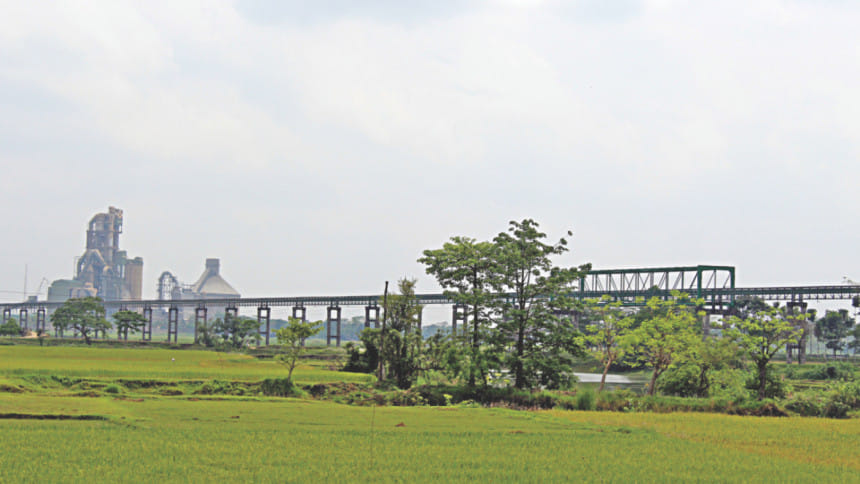LafargeHolcim replaces 17-km conveyor belt

Lafargeholcim Bangladesh Ltd has replaced the old belt of its 17-kilometre-long conveyor with a new one to ensure the noise-free movement of limestone from its mine in India to its cement plant in Bangladesh and keep up production.
The replacement work was completed in two phases, with the second and the last stage ending on April 18, said Harpal Singh, project head of operations of the Surma plant.
“We have finished the replacement work one day ahead of the schedule,” he said.
LafargeHolcim set up the conveyor belt, one of the longest trans-boundary conveyors in the world, in 2004 from Meghalaya to its cement plant in Sunamganj. It traverses 10 kilometres (km) in Bangladesh and 7 km in India.
The old belt all throughout used to create noise, according to officials.
The Surma plant, located in Chhatak upazila, is the only clinker manufacturing plant in Bangladesh. It also produces high quality cement.
The plant makes use of a waste management service called Geocycle, aligned with LafargeHolcim's plan to promote eco-friendly waste management.
The plant disposed 950 tonnes of waste in 2017 and has targeted to recycle 1,200 tonnes of waste this year.
“LafargeHolcim provides a safer and more responsible solutions for industrial waste management towards a zero-waste future,” said Md Anisuzzaman, head of quality and optimisation of LafargeHolcim Bangladesh.
The platform focuses on solutions for hazardous and non-hazardous solid waste, effluent treatment plant's sludge, waste oil and pharmaceutical waste, turning them into clinker, he said.
The cement plant serves the locals of Chhatak upazila under its corporate social responsibility initiative.
LafargeHolcim is helping 15 villages adjacent to the plant and the conveyor with education, health and vocational training services.
The company has supported 1,200 families of Noarai and Tingergaon villages who were affected by the project.
It also provided vocational trainings to about 1,500 people of the locality through its community development centre in the upazila, according to Shabbir Hossain, senior manager for CSR and stakeholder relations.
Rajesh Surana, chief executive officer of LafargeHolcim Bangladesh, said, “Our project is unique in nature where we have our quarries in India and plant in Bangladesh. It is a symbol of friendship and economic cooperation between two neighbouring countries,”
“This is also a symbol of technical capabilities of LafargeHolcim Group.”
One of the largest foreign investments in Bangladesh, the group has invested about $500 million in the country.
“With every tonne of clinker being produced, Bangladesh saves about $30 in valuable foreign exchange,” Surana said.
He said the clinker manufacturing process was the main centre where 80-85 percent of the value addition taking place.
The plant created job opportunities for over 3,000 people in Bangladesh.

 For all latest news, follow The Daily Star's Google News channel.
For all latest news, follow The Daily Star's Google News channel. 



Comments